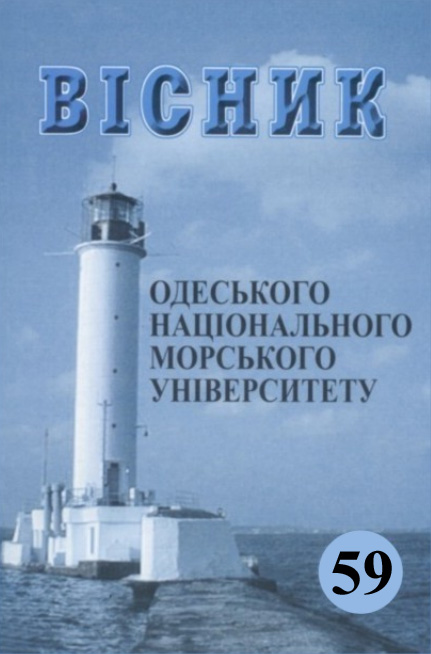Development of solder to solder heat resisting nickel alloys for marine gas turbines
Main Article Content
Abstract
The alloying of alloys with rhenium and tantalum allowed the deve-lopment of new alloys CM 93 and CM 96, which made it possible to raise the operating temperature of the gas of marine gas turbine engines (GTE) by 40-60 ° C and ensure resistance to high-temperature salt corrosion (HTSC). Solder SBM-3 is designed for soldering GTE. In order to be able to use it for soldering marines GTE, it has been proposed to reduce the brazing temperature by introducing Si depressants through NS-12 solder. Si also increases resistance to HTSC. The composition of SBM-3 was added 10, 20 and 30 % of the mass. NS-12. Adding NS-12 solder to SBM-3 at a constant brazing temperature increases the solder spreading area over the CM 93 surface at 1200 °С from 40 to 50 mm2; at a temperature of 1220 °C from 60 to 100 mm2; at a temperature of 1240 °С from 180 to 205 mm2. The spreading area of the solder increases 4-4,5 ° times with an increase in the soldering temperature from 1200 to 1240 °C for all the tested solder compounds SBM-3 with NS-12. Wetting angle decreases with increasing concentration of NC-12 from 10 to 30 % of the mass. In SBM-3 solder: at a temperature of 1220 °С from 6,3 ° to 4 °; at a temperature of 1240 ° С from 4,8 ° to 3,3 °, and at a temperature of 1200 ° С it is approximately 7 °. With an increase in brazing temperature from 1200 ° C to 1240 ° C, the wetting angle decreases: at 10 % of the mass. NS-12 from 7,5 ° to 4,8 °; at 20 % of the mass. NS-12 from 6,5 ° to 4,0 °; at 30 % of the mass. NS-12 from 7,5 ° to 4,0 °. The distribution of Si over the height of a drop in its diametral plane is uneven. At a brazing temperature of 1200 ° C at the boundary with the base metal Si, its concentration increases along the height of the drop and reaches a maximum value on its surface of 12,71 % wt. (addition of NS-12 − 30 % of the mass.) Or in its central part 2, 64 % of the mass. (addition of HC-12 − 10 % of the mass.) and 6.39% of the mass. (additive NS-12 − 20 % of the mass.). At a soldering temperature of 1220-1240 ° C, the maximum concentration of Si is observed almost in the middle of the drop height. With an increase in the soldering temperature of more than 1200 °C, the dissolution of the base metal in the solder, as well as Si in the base metal on the verge of the solder-base metal, is observed
Article Details
References
2. Sims C.T., Stoloff N.S., Hagel W.K. (1995). Supersplavy ІІ: zharoprochnyye materialy dlya aerokosmicheskikh i promyshlennykh energoustanovok [Superalloys II: heat-resistant materials for aerospace and industrial power plants]. Metallurgiya (Metallurgy). – Moscow, 384 (in Russian).
3. Myalnitsya G.P., Maksyuta І.І., Kvasnitska Yu.G, Mikhnyan O.V. (2013). Vibіr leguyuchogo kompleksu novogo korozіynostіykogo splavu dlya soplovikh lopatok GTD [The choice of a new complex alloying corrosion-resistant alloy nozzle GTE blades]. Metal Science and Materials Processing, vol. 2, pp.29-34 (in Russian).
4. Myalnitsya G.P., Maksyuta І.І., Kvasnitska Yu.G, Mikhnyan O.V., Neyma A.V. (2012). Obespecheniye fazovo-strukturnoy stabil’nosti vysokokhromistykh zharoprochnykh splavov dlya lopatok GTU [Ensuring phase-structural stability of high-chromium heat-resistant alloys for GTU blades]. Metal and casting, vol.11, pp.16-20 (in Russian).
5. Lukin V.I., Rylnikov V.S., Afanasyev-Khodykin A.N., Timofeyeva O.B. (2013). Osobennosti tekhnologii diffuzionnoy payki zharoprochnogo splava EP 975 i liteynogo monokristallicheskogo intermetallidnogo splava VKNA-4U primenitel’no k konstruktsii «Blisk» [Features of diffusion brazing technology of heat-resistant alloy EP 975 and casting single-crystal intermetallic alloy VKNA-4U as applied to the «Blisk» design]. Welding production, vol. 7, pp.19-25 (in Russian).
6. Afanasyev-Khodykin A.N., Lukin V.I., Rylnikov V.S. (2010). Tekh-nologiya polucheniya neraz'yemnykh soyedineniy iz splava ZHS 36 [The technology for the production of permanent joints from ZhS 36 alloy]. Welding production, vol.7, pp.27-31 (in Russian).
7. Malashenko I. S., Mazurak V. E., Kushnareva T. N., Kurenkova V. V., Zavidonov V. G., Yavdoshchina E. F. (2014). Payka v vakuume litogo nikelevogo splava ZHS6U kompozitsionnymi pripoyami na osnove VPr36. Chast 1 [Vacuum brazing of cast nickel alloy ZhS6U with composite solders based on VPr36. Part 1]. Modern electrometallurgy, vol. 4, pp. 49-58 (in Russian)
